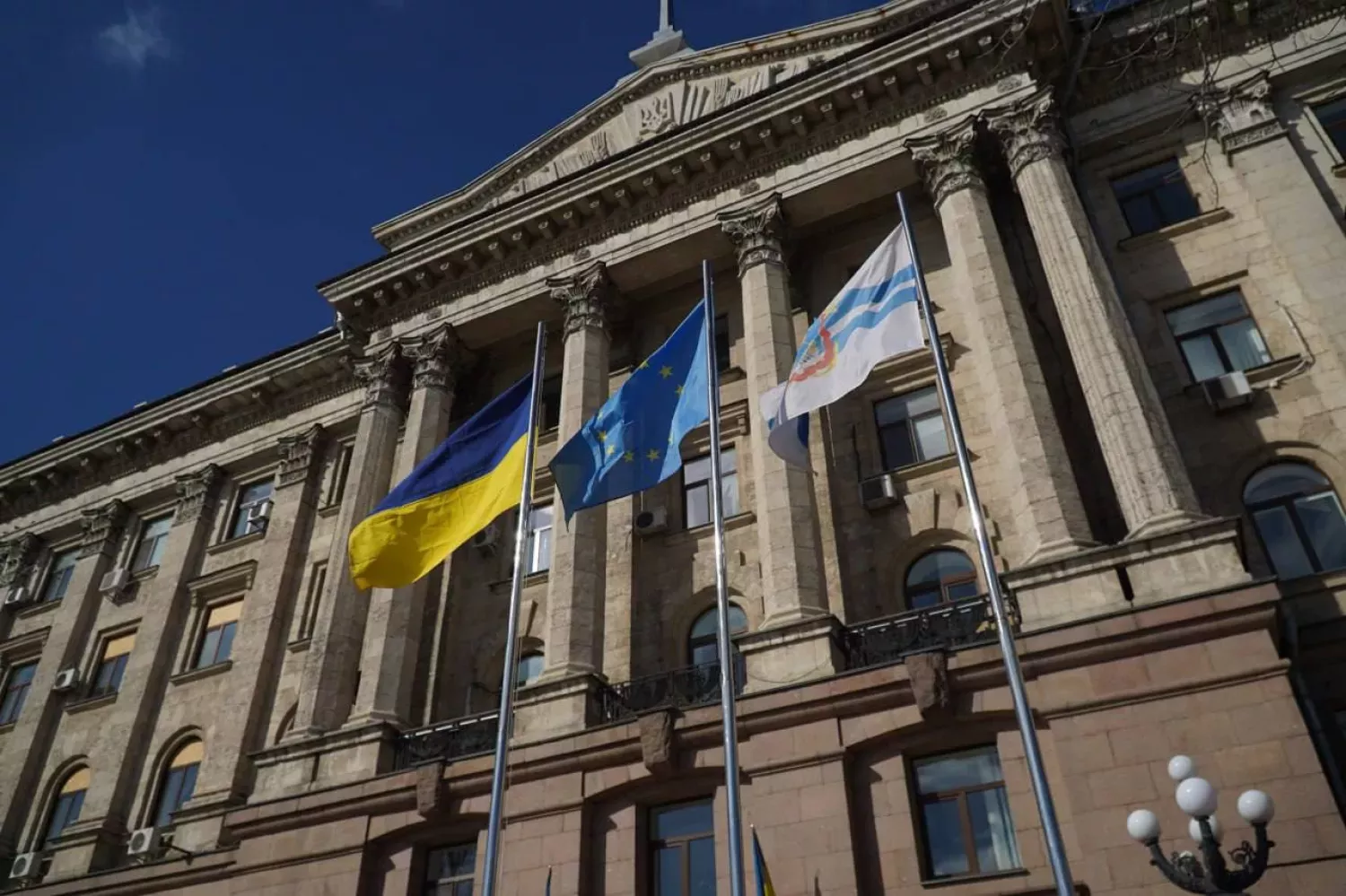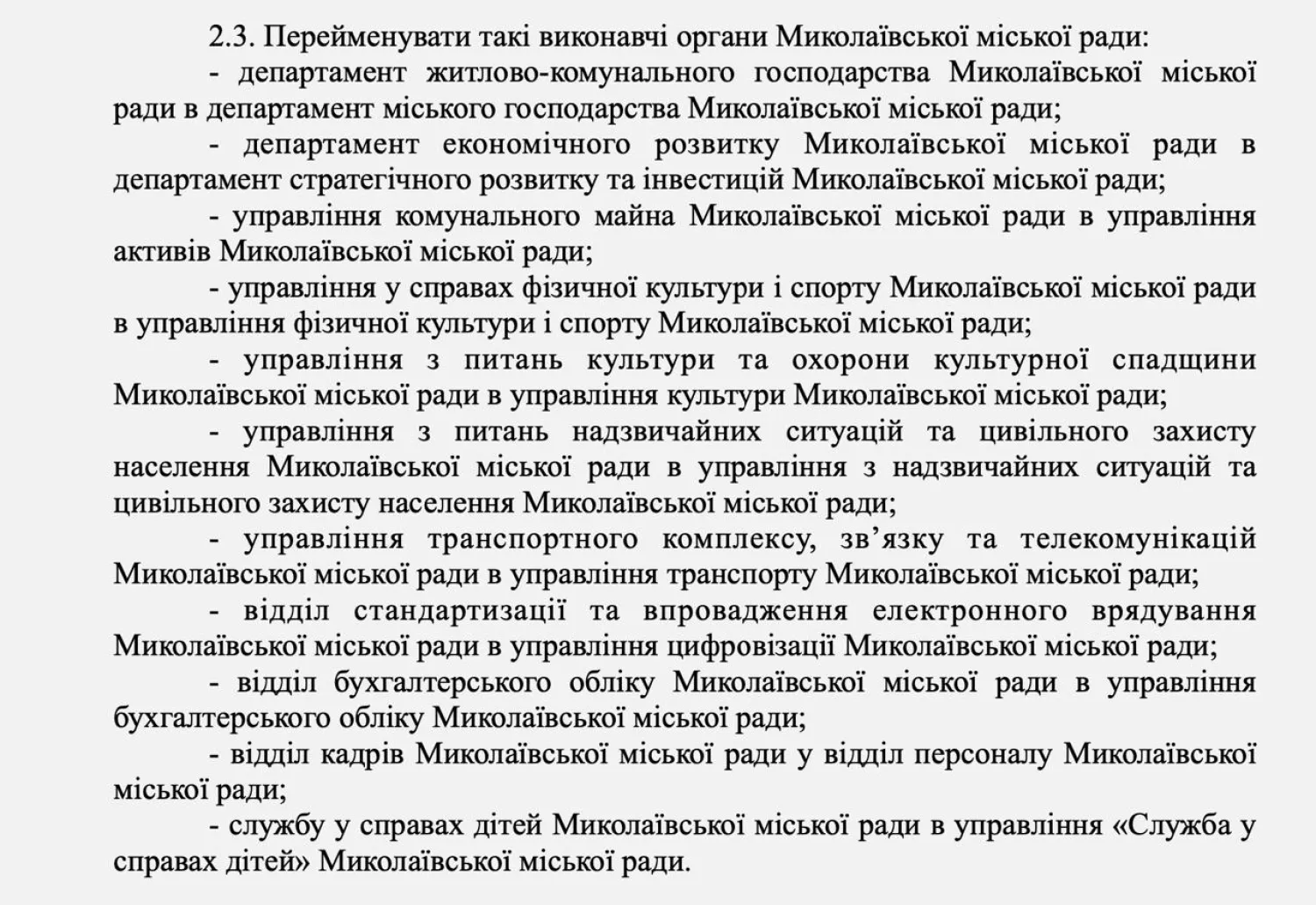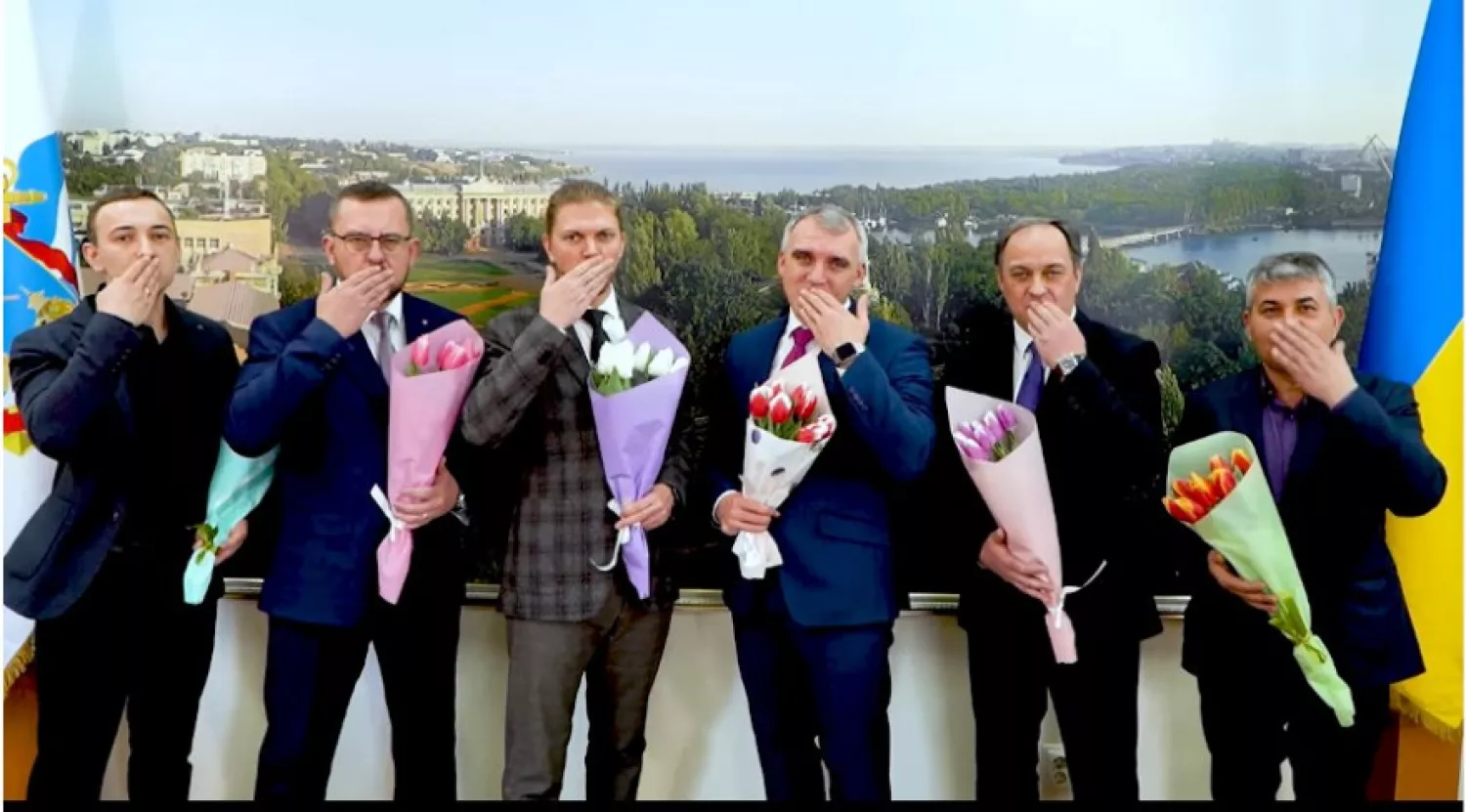What is left of the Great Reform of the structure of Mykolaiv City Hall and will be submitted to the session: Analysis of the draft decision
- Kateryna Sereda
-
•
-
14:00, 07 August, 2025
 The draft of the new structure of Mykolaiv City Hall was developed in cooperation with the EU Anti-Corruption Initiative, archive photo
The draft of the new structure of Mykolaiv City Hall was developed in cooperation with the EU Anti-Corruption Initiative, archive photoThe Mykolaiv City Council is preparing to approve an updated structure of executive bodies. It will be presented to the deputies on 7 August, and on 28 August, Mayor Oleksandr Sienkevych plans to put the decision to a vote at the session. The new version of the structure, prepared after consultations with deputies and lawyers, differs significantly from the vision that was publicly presented several months ago.
In February 2024, the launch of this reform was accompanied by ambitious statements: the mayor's office announced cooperation with Ernst & Young and the EU Anti-Corruption Initiative, and Oleksandr Sienkevych himself emphasised:
«Mykolaiv City Council strives to create an accountable and virtuous environment that is resistant to corruption risks... We want to not only learn from the experience of others, but become an example to follow.»
Has the updated structure become such an example?
Key change: from ambitious reform to technical streamlining
 Mayor of Mykolaiv Oleksandr Senkevych wants to have a new structure of the city hall by autumn, photo by NikVesti
Mayor of Mykolaiv Oleksandr Senkevych wants to have a new structure of the city hall by autumn, photo by NikVestiBack in April, Mykolaiv Mayor Oleksandr Sienkevych presented a draft of a new structure of executive bodies, which was developed in accordance with the recommendation of the Ernst & Young audit. The new structure envisaged a reduction in the number of key spending units, liquidation and consolidation of departments. The goal was to create a logical structure with a minimum number of management levels, avoid duplication of functions by different units, centralise service functions and reduce the number of spending units from 21 to 9. At the same time, it was also about the actual elimination of district administrations as budget managers, and about a new vice mayor in charge of the strategic direction of digitalisation of city management.
The updated version submitted for consideration is more restrained and mainly consists of the following steps:
- Elimination of two departments: the anti-corruption department, which is merged with the executive committee, and the energy department, which is merged with the Capital Construction Department (CCD).
- Establishment of three new departments: the internal audit service, the landscaping inspection and the procurement department.
- Massive renaming: for example, housing and communal services — «municipal economy», economy department — «strategic development and investment», human resources department — «personnel department».
 "Cosmetic" changes in the structure of executive bodies of Mykolaiv city council, screenshot from the draft decision of the city council
"Cosmetic" changes in the structure of executive bodies of Mykolaiv city council, screenshot from the draft decision of the city council- Formalisation of requirements for the number of units: at least 3 divisions for a department, 2 for a management unit, 5 people to create a department.
In general, the number of spending units will be reduced from 21 to 15, not to 9 as previously proposed.
Such changes are an attempt to streamline the existing structure rather than transform it.
No Deputy for Digitalisation?
One of the most high-profile announcements during the presentation in April was the creation of a separate position of Deputy Mayor for Digital Transformation.
In general, it was proposed that the mayor of Mykolaiv would have seven deputies, instead of the current six.
At the time, both Sienkevych and a representative of the audit company Ernst & Young stressed that digitalisation was the key to reducing the number of officials in the future, and that the vice mayor would be subordinated to the relevant department. At the time, answering a question from a journalist from NikVesti about the feasibility of introducing another deputy mayor position during the presentation of the new structure, Ernst & Young Ukraine's Advisory Practice Leader Kostiantyn Neviadomskyi said that digital transformation was a strategic direction.
The final draft decision does not mention a new deputy at all. The Department of Digitalisation is formally created on the basis of the Department for Standardisation and Implementation of E-Governance, headed by Dmytro Kanarskyi. However, it is not clear who will be in charge of it and whether it is a strategic direction.
If this idea has been abandoned, it means that the city has changed its strategy and refused to implement the strategic direction of digitalisation, which, along with anti-corruption policy, was named among the top priorities in cooperation with EUACI and Ernst & Young.
Capital Construction Department also takes energy efficiency area
 Mykolaiv Mayor Oleksandr Sienkevych and his deputy Serhiy Korenev, responsible for reconstruction, archive photo by NikVesti
Mykolaiv Mayor Oleksandr Sienkevych and his deputy Serhiy Korenev, responsible for reconstruction, archive photo by NikVestiAccording to the draft decision, the functions of the liquidated Energy Efficiency Department will be transferred to the Capital Construction Department (CCD). This means that the unit responsible for capital infrastructure projects will now also deal with energy efficiency.
As a reminder, the CCD reports to Deputy Mayor Serhii Koreniev, who is also responsible for the post-war reconstruction of Mykolaiv. Now his portfolio is expanding to include energy and municipal property.
Thus, in the new structure, Vice Mayor Serhii Koreniev will have significantly more functions, especially given that there will be no separate Vice Mayor for Energy and Digitalisation. He will now be in charge of capital construction, including energy efficiency, emergency management, the Department of Economics and the Mykolaiv Development Agency, as well as the property management department (newly called asset management).
Is the reform of administrations forgotten in the structure?
The draft decision states in a separate paragraph that district administrations remain in the structure. At the same time, there is no information on changes in their powers, the need for which was previously emphasised by the EU Anti-Corruption Initiative and Mayor Oleksandr Sienkevych personally.
During a public presentation of the structure in the spring, the mayor explicitly stated that in the future he planned to deprive district administrations of their powers as contracting authorities. It was assumed that they would no longer be involved in street cleaning, private sector repairs or landfill liquidation. These functions were to be transferred to the level of departments.
See also: District administrations in Mykolaiv: Why are they needed, and how do the heads work?
Then the heads of administrations reacted openly: Oleksandr Bereza and Hanna Remennikova expressed their concerns. Both are members of the city council from the pro-mayor faction «Proposal» and are also heads of the city's Central and Inhulskyi districts.
In the structure itself, which is being submitted to the session, the administrations appear to remain in the same status, without any mention of reform or change of function. This suggests that the mayor's proposal probably did not receive sufficient support in the deputy corps — as some interlocutors NikVesti from the mayor's team predicted back in April.
Structure without numbers: will there be real savings?
 Mykolaiv mayor Oleksandr Sienkevych with his deputies and the city council secretary, photo by Svidok.info
Mykolaiv mayor Oleksandr Sienkevych with his deputies and the city council secretary, photo by Svidok.infoNeither in the spring nor now, neither the decision itself nor the annexes indicate the number of employees — as before, it is planned to be approved together with the budget.
During previous presentations at the mayor's office, the number of officials might be reduced, but even then Sienkevych admitted that even if the number of staff is reduced, the payroll is unlikely to decrease, as salaries for qualified staff will have to be raised.
In fact, the key focus is not on direct cost reduction, but on increasing efficiency and reducing corruption risks. In this context, the question remains: does the adopted draft meet these goals?
The updated draft structure does contain positive steps, such as systematisation, limiting the number of managers, and combining functions. However, compared to the previously announced vision and public expectations, we see a decrease in ambition:
- The position of vice mayor for digitalisation has disappeared;
- The reform of administrations has been suspended;
- Powers are being concentrated in existing deputies;
- Priority areas — such as digital transformation or the fight against corruption — are impersonalised.
It seems that the new decision was based on the logic of technical compromise rather than political courage. And this is not a step backwards, but it is definitely not the same as becoming an example for other frontline cities, as the mayor's office wanted six months ago.
Read also:
Kateryna Sereda, Yuliia Boichenko, NikVesti